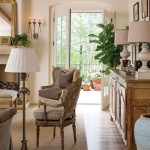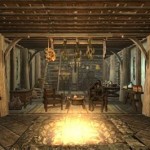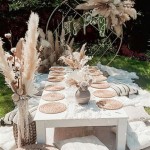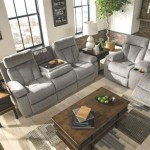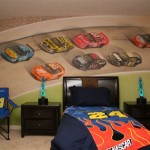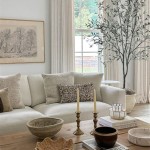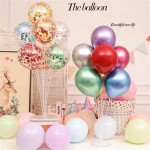How To Make Your Decor Look Expensive
Achieving a sophisticated and luxurious aesthetic in interior design does not necessarily demand exorbitant expenditure. Strategic choices and careful implementation of design principles can elevate the visual appeal of a space, creating an illusion of opulence without surpassing budgetary constraints. This article delves into practical methods for enhancing home decor, focusing on techniques that maximize impact while minimizing financial outlay.
Strategic Color Palette Selection
Color plays a pivotal role in shaping the perceived value of a living space. A well-considered color palette can evoke a sense of refinement and sophistication. Opting for saturated or muted tones, rather than overly bright or pastel shades, often creates a more luxurious feel. Neutral colors, such as grays, beiges, and creams, provide a versatile foundation that allows for the incorporation of richer accent colors through accessories and artwork.
Monochromatic color schemes, characterized by varying shades and tints of a single color, can also contribute to a cohesive and elegant aesthetic. When employing a monochromatic approach, it is crucial to introduce textural variations to prevent the space from appearing flat or monotonous. Texture can be introduced through fabrics, wall coverings, and decorative objects.
Furthermore, judicious use of metallic accents, such as gold, silver, or bronze, can add a touch of glamour and sophistication. These metallic elements can be incorporated through picture frames, light fixtures, or decorative hardware. However, it is vital to exercise restraint, as excessive use of metallic finishes can detract from the overall elegance of the design.
The finish of the paint used also contributes significantly to the perceived quality of a room. Matte paints offer a softer, more sophisticated look, concealing imperfections and creating a sense of depth. Satin or eggshell finishes are preferable for areas prone to moisture or requiring frequent cleaning, but should be selected carefully to ensure they complement the overall design aesthetic.
Elevating with Textural Variety
The incorporation of diverse textures is a crucial element in creating a visually rich and luxurious interior environment. Texture adds depth and dimension to a space, preventing it from feeling sterile or one-dimensional. The strategic use of contrasting textures can significantly enhance the perceived value of the decor.
Fabrics are a primary means of introducing texture into a room. Investing in high-quality fabrics, such as velvet, linen, silk, or faux fur, can instantly elevate the look and feel of furniture and accessories. These fabrics can be used for upholstery, curtains, throw pillows, and rugs, creating a tactile and visually appealing environment.
Wall coverings offer another avenue for introducing texture. Textured wallpaper, such as grasscloth or embossed paper, can add depth and visual interest to walls. Alternatively, incorporating natural materials, such as wood paneling or stone accents, can create a sense of warmth and sophistication.
Accessories, such as woven baskets, ceramic vases, and metal sculptures, also contribute to the overall textural landscape of a room. Carefully curating a collection of accessories with varying textures can create a visually stimulating and inviting atmosphere.
The interplay of smooth and rough textures, soft and hard textures, and matte and glossy finishes is essential for achieving a balanced and sophisticated design. Experimenting with different combinations of textures can help to create a space that is both visually appealing and tactilely engaging.
Optimizing Lighting Design
Effective lighting is fundamental to creating an inviting and sophisticated atmosphere. Well-planned lighting can enhance architectural features, highlight decorative elements, and influence the overall mood of a space. A layered lighting approach, incorporating ambient, task, and accent lighting, is essential for achieving optimal results.
Ambient lighting provides the general illumination for a room and establishes the overall mood. Recessed lighting, chandeliers, and pendant lights are common sources of ambient lighting. Selecting fixtures that complement the overall design aesthetic is crucial for creating a cohesive and harmonious look.
Task lighting provides focused illumination for specific activities, such as reading, cooking, or working. Table lamps, floor lamps, and under-cabinet lighting are examples of task lighting. These fixtures should be strategically placed to provide adequate light for the intended activity while also contributing to the overall design.
Accent lighting is used to highlight specific objects or areas, such as artwork, architectural details, or decorative features. Track lighting, spotlights, and picture lights are commonly used for accent lighting. These fixtures can be used to create visual interest and draw attention to key elements within the room.
Dimmer switches are an essential component of a well-designed lighting system. They allow for the adjustment of light levels to create different moods and atmospheres. Dimmer switches can be installed on ambient, task, and accent lighting fixtures, providing maximum flexibility and control.
Natural light is also a crucial element of lighting design. Maximizing the amount of natural light entering a room can significantly enhance its overall appeal. Using sheer curtains or blinds can allow natural light to filter into the room while providing privacy. Strategically placing mirrors can also help to reflect and amplify natural light.
Emphasizing Artwork and Accessories
Thoughtfully chosen artwork and accessories can serve as focal points within a space, adding personality, visual interest, and a sense of sophistication. Selecting pieces that complement the overall design aesthetic and reflect personal taste is crucial for creating a cohesive and inviting environment.
Investing in a few impactful pieces of artwork is preferable to cluttering walls with numerous small or insignificant items. Large-scale paintings, sculptures, or photographs can create a dramatic statement and elevate the perceived value of the space. The artwork should be appropriately framed and hung at eye level to maximize its impact.
Accessories, such as vases, bowls, and decorative objects, can be used to add texture, color, and visual interest to shelves, tables, and mantels. Carefully curating a collection of accessories with varying shapes, sizes, and materials can create a visually stimulating and engaging display.
Books are another valuable accessory that can add character and sophistication to a space. Displaying books on shelves, tables, or in stacks can create a sense of intellectual curiosity and personal style. Arranging books by color or size can create a visually appealing and organized display.
Plants and flowers can bring life and vibrancy to a room, creating a sense of freshness and vitality. Selecting plants that thrive in the specific lighting conditions of the room is essential for ensuring their health and longevity. Arranging plants in decorative pots or containers can enhance their visual appeal.
The arrangement of artwork and accessories is just as important as the selection of the items themselves. Creating balanced and symmetrical arrangements can create a sense of order and harmony. Grouping items in odd numbers (e.g., three or five) can often create a more visually appealing and dynamic display.
Maintaining Order and Cleanliness
Regardless of the specific design choices implemented, maintaining a clean and organized living space is paramount for creating a luxurious and inviting atmosphere. Clutter and disarray can detract from the perceived value of even the most well-designed rooms. Implementing effective storage solutions and establishing regular cleaning routines are essential for maintaining a polished and sophisticated appearance.
Investing in storage solutions, such as shelves, cabinets, and baskets, can help to keep clutter out of sight. Maximizing vertical space by using tall bookshelves or wall-mounted cabinets can create additional storage without taking up valuable floor space.
Establishing a regular cleaning routine is essential for maintaining a clean and hygienic living environment. Dusting, vacuuming, and wiping down surfaces regularly can prevent the buildup of dirt and grime. Paying attention to details, such as cleaning windows and polishing furniture, can further enhance the overall appearance of the space.
Organizing belongings and decluttering regularly can help to prevent the accumulation of unnecessary items. Donating or selling items that are no longer needed or used can free up space and create a more streamlined and organized living environment.
Maintaining a clean and organized kitchen and bathroom is particularly important, as these are often the most frequently used rooms in the house. Keeping countertops clear, cleaning appliances regularly, and organizing drawers and cabinets can create a more functional and aesthetically pleasing space.
By prioritizing cleanliness and organization, individuals can create a living environment that is both visually appealing and conducive to relaxation and well-being. These practices emphasize the inherent elegance that exists within the chosen decor, regardless of its price point.
How To Make Home Look Expensive For According Designers
How To Make Home Look Expensive For According Designers
How To Make Home Look Expensive For According Designers

Home Décor Ideas For Making Your Dwelling Look Expensive On A Budget The Storage Space

Inexpensive Ways To Make Your Home Look Expensive Setting For Four Interiors

7 Ways To Make Your House Look Expensive
:strip_icc()/cdn.cliqueinc.com__cache__posts__196845__cheap-bedroom-decoration-ideas-196845-1499729435062-image.700x0c-e5fe5d774b004cc183aec287a7e51621-6742e9809fbe4170913902c6c9c61fc9.jpg?strip=all)
The 7 Best Ways To Make Your Bedroom Look Expensive

Inexpensive Ways To Make Your Home Look Expensive Setting For Four Interiors

How To Make Your Home Look More Expensive Diy Furniture Flip Easy Decor Decorating On A Budget

10 Ways To Make Your Home Look Expensive Design S
Related Posts
